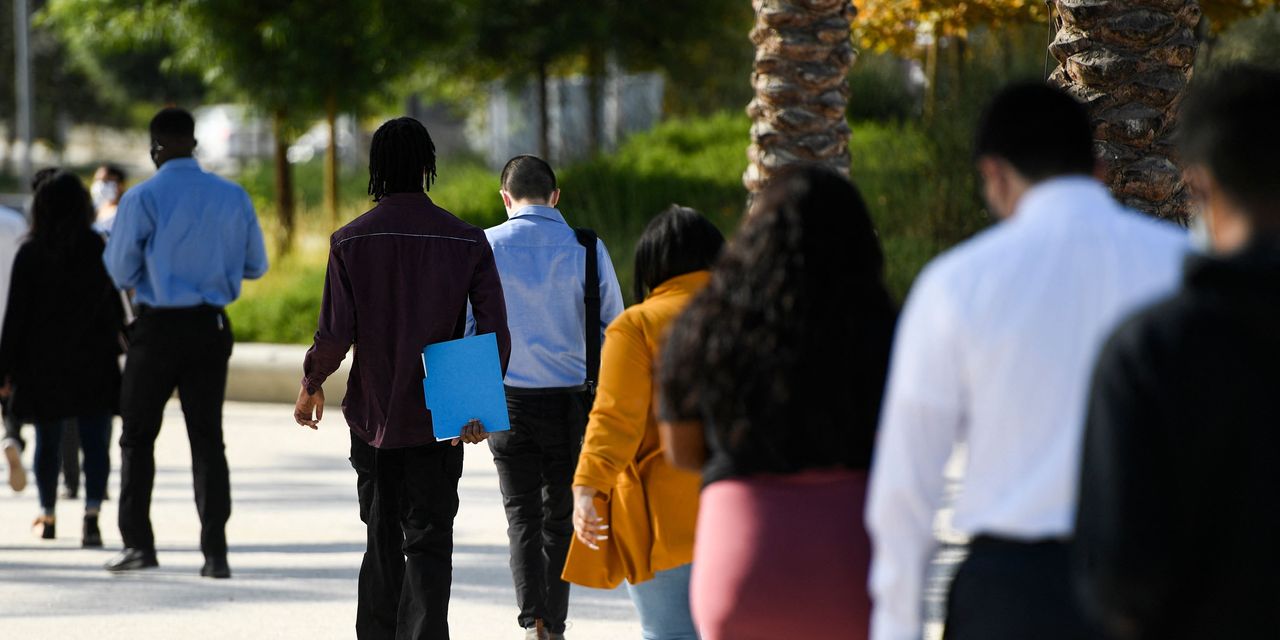Can the Federal Reserve slow the economy and crush high inflation without triggering mass layoffs? Top officials at the central bank think they can pull it off.
Most economists predict the U.S. will fall into recession by next year because of rapidly rising interest rates. The Fed is jacking up rates to try to tame the biggest burst of inflation in 40 years.
Whenever the Fed has embarked on a cycle of rate hikes, the U.S. has almost always suffered a surge in unemployment and an ensuing recession. Higher borrowing costs slow the economy by depressing consumer spending and business investment.
“ “Business contacts tell us that given how hard it has been to attract and retain workers over the last two years, they intend to keep their workers even as the economy slows.” ”
This time might be different, some central bankers suggest. How come?
The U.S. is suffering from arguably its worst labor shortage ever, they say. Businesses might be very reluctant to cut as many workers as they normally do in a recession because it would be hard to get them back once the economy recovers.
“Business contacts tell us that given how hard it has been to attract and retain workers over the last two years, they intend to keep their workers even as the economy slows,” Cleveland Federal Reserve President Loretta Mester said on Thursday.
“If so, we could see less of an increase in the unemployment rate than is typical in an economic slowdown,” she added.
Thomas Barkin, president of the Richmond Fed, agreed.
“I just think firms are still holding onto workers,” he said last week. “If you’ve worked hard for the last year or two years to try to get your staffing back up … it’s quite a change in approach to say you’re going to have a fewer workers.”
Fed Chairman Jerome Powell is in the same camp.
He points to the record number of job openings per unemployed worker as a sign of just how strong the labor market is. Powell suggested last week that companies could react to a weaker economy by letting job openings go unfilled instead of laying off many employees.
“All I would say is that the job losses may turn out to be less than would be indicated by those traditional measures because job openings are so elevated and because the labor market is so strong,” Powell said.
Wall Street economists
DJIA,
SPX,
are skeptical.
Many think unemployment could shoot above 5% or even 6% in the next year from the current rate of 3.7%, which is near a half-century low. That would mean several million people losing their jobs.
So far the Fed has clung to a more modest forecast of unemployment rising to 4.4%.
History is not on the side of the central bank. The U.S. jobless rate has topped 6% — and often gone much higher — after every recession that’s taken place since World War Two.
Even with the economy still growing, economists point out, more companies are resorting to layoffs. Meta
META,
the parent of Facebook, just cut thousands of jobs, as did Twitter.
“Some big companies are already laying off people,” noted Dan North, senior economist at Allianz Trade North America.
That’s not to say unemployment is guaranteed to soar and top 6% again, especially with the current rate so low. Economists say it would depend on the severity of a recession and how long it lasted.
Still, Fed officials are holding out hope.
“This labor market can soften without having to soften as much as history would indicate through the unemployment channel, Powell said.
